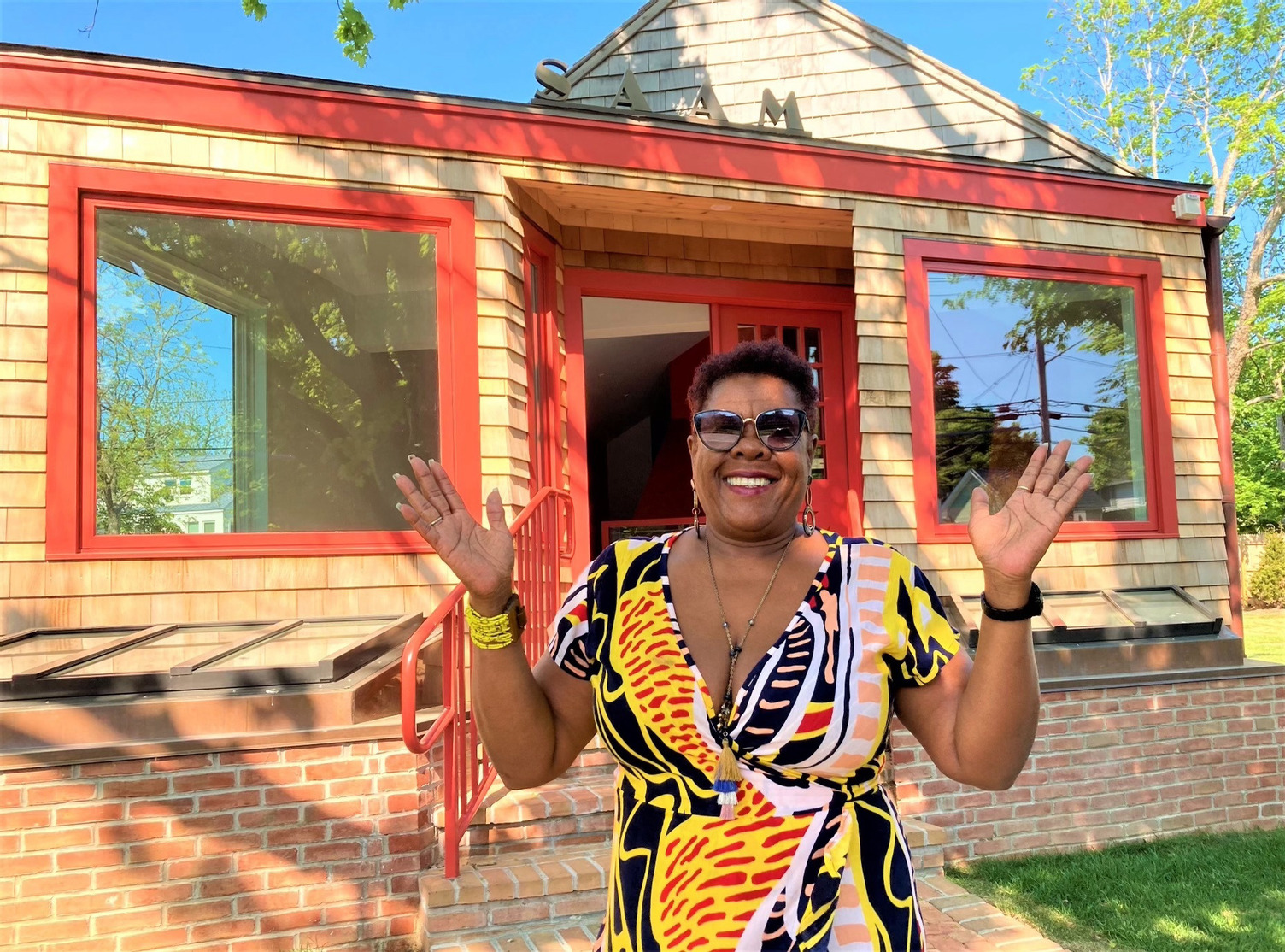February 23, 2024
Brenda Simmons ’05: Preserving Black History in a Resort Town

In the wealthy enclave of The Hamptons, on the east end of Long Island, NY, Brenda Simmons ’05 is keeping Black history alive — and making history while she’s at it.
Whether it’s opening the Southampton African American Museum in a former Black barbershop, rebuilding the home of slave-turned-philanthropist Pyrrhus Concer, or working with school kids, Simmons is determined to make Black history a part of the community where she was born and raised.
“Even to this day, when I tell people I’m from Southampton, they look at me very weird,” says Simmons, who spends part of the year in St. Martin. “A lot of people don’t think black people live in the Hamptons.”
U.S. census records from 2022 show that Blacks and African Americans make up 5.7 percent of the population of Southampton, which makes the work Simmons does that much more important.
Growing Up in The Hamptons
Simmons was born and raised in Southampton. Her family had settled there in the 1950s after leaving the south during the Great Migration. Her father ran his own landscaping company, and her mother worked in the Sag Harbor Bulova factory, later becoming a nursing assistant. At night, her father owned and operated the Cottage Inn in Easthampton, where acts such as the Lovin’ Spoonfuls, Ike and Tina Turner, James Brown, Aretha Franklin, and Dinah Washington performed.
Simmons was a child when she started answering the phone at the barbershop and beauty parlor owned and built by Emmanuel Seymore at 245 North Sea Road. Her aunt, Evelyn Baxter, worked there as the beautician. Simmons would make appointments and do coffee runs. “It was my first job,” she recalls.
Friends and neighbors went there to listen to music or chat. It was also a training ground for aspiring barbers. Simmons said Randy Conquest, the last owner of the barbershop, was often heard urging people to vote and to get their college degrees.
“That barbershop was such a significant hub for the black community,” Simmons says. “So much happened in that building. It was like a community center, a gathering place.”
Simmons went back to college herself after a bad divorce, choosing Empire State University for its flexibility. “It was a tough time,” she says. “But I was determined to further my education to make more money to help support my two girls and keep a roof over our heads and my car for transportation to work. I was working full time and had a sick father to take care of, too.”
She graduated in 2005 with a bachelor’s degree in community and human service with a concentration in family advocacy. She also received the Chancellor’s Award for Student Excellence.
A Museum is Born
That same year, while working as the assistant to village Mayor Mark Epley, Simmons opened a letter from a village official asking that Randy’s Barbershop be torn down. “When I saw the letter, I brought it to the mayor, and I said ‘Mark, I will be the crazy woman in front of the bulldozer,’” she recalls. “This is not going to happen.”
Simmons began taking workshops on historic preservation and learning what she had to do to save the barbershop. “It was a gathering place, and it had to stay there,” she says. “It couldn’t just go away.”
With help from interviews with former musicians who had performed at the Fives, a juke joint next door to the barbershop, Simmons convinced the village’s Architectural Review Board in 2010 to designate the future museum a historic site, making it the first African-American site in the village of Southampton to secure that designation.
Even so, the Southampton African American Museum didn’t open until Juneteenth 2021. “I worked on it for 16 years,” Simmons says. “It took a lot to get it done.”
Today, Simmons is founder and executive director of the 775-square foot museum. It currently houses an exhibit about the history of black barbers, beauticians, and barbershops, a recreation of the original shop — featuring an original chair, hair products, and utensils — and works by Black artists. The museum conducts school tours and hosts visitors, who come to learn about Black history in Southampton and beyond.
Advocate for the Past
Simmons’ work is not over. Together with Georgia Grier-Key, Ph.D., executive director of the Eastville Historical Society in Sag Harbor — whom she calls her co-conspirator — Simmons continues the fight to rebuild the home of Pyrrhus Concer in Southampton, an effort that began in 2013.
Concer, a former slave born in 1814, was a Black whaler and prominent businessman and philanthropist in Southampton. He is believed to be the first African-American to visit Japan in 1845. Remnants of his home at 51 Pond Lane are now stored in a trailer that sits on the vacant property until a decision on the house is made.
Simmons is also bracing for another preservation project at the Cottage Inn in Easthampton, where a senior citizen center is currently based. Plans to build a new center may jeopardize the Cottage Inn, she says.
Preserving historic buildings is only one way Simmons works to keep history alive in this upscale resort town. She also does online Black history programs when she is asked and assists teachers who want to design cultural curriculums for local schools. This year, she collaborated with Frank Bold of the Bold Art Society in Brooklyn to create “The Black Power Exhibit: Revolutionary Artists from Around the Diaspora,”
“I’ve concluded that I do this because I’m an advocate and an activist,” Simmons says. “I’m on assignment, and I don’t like injustice.”